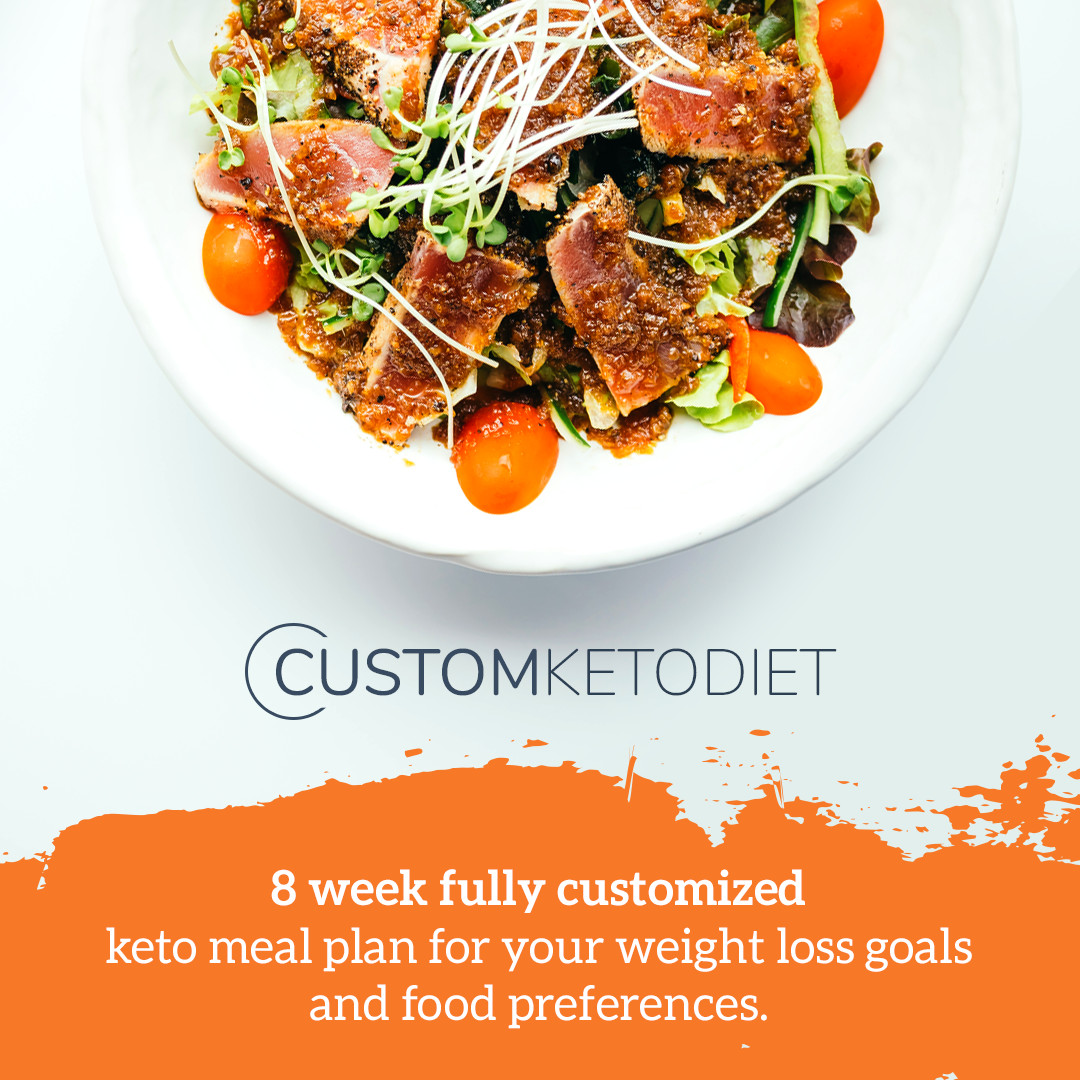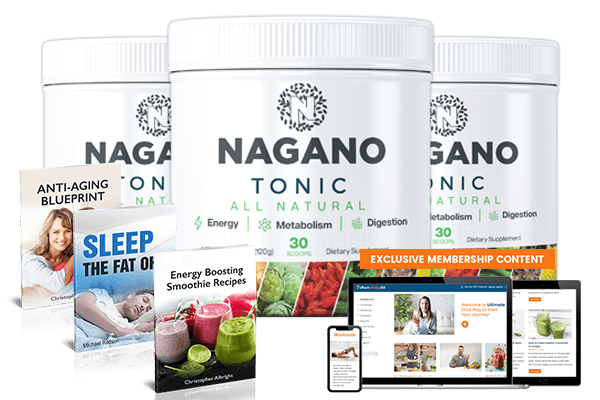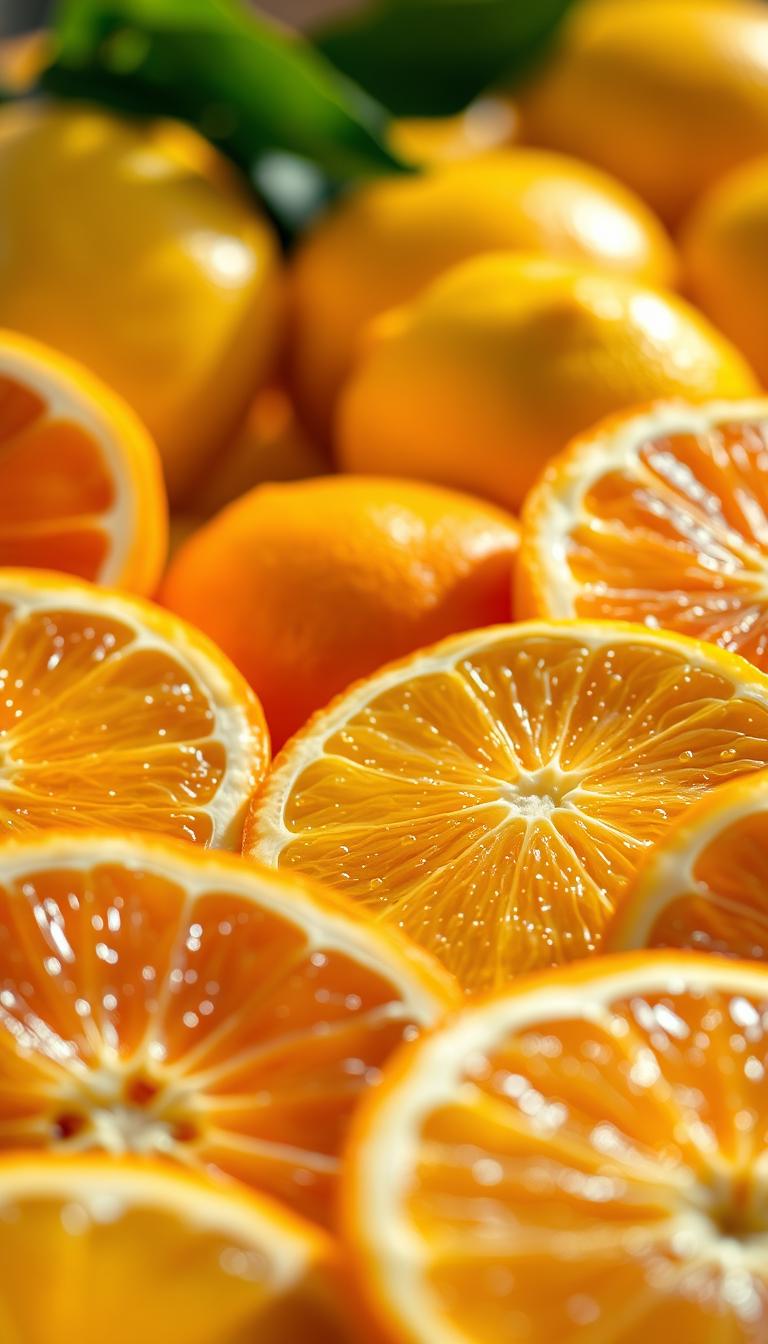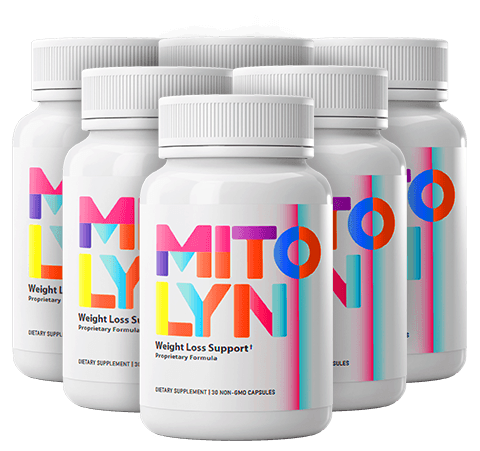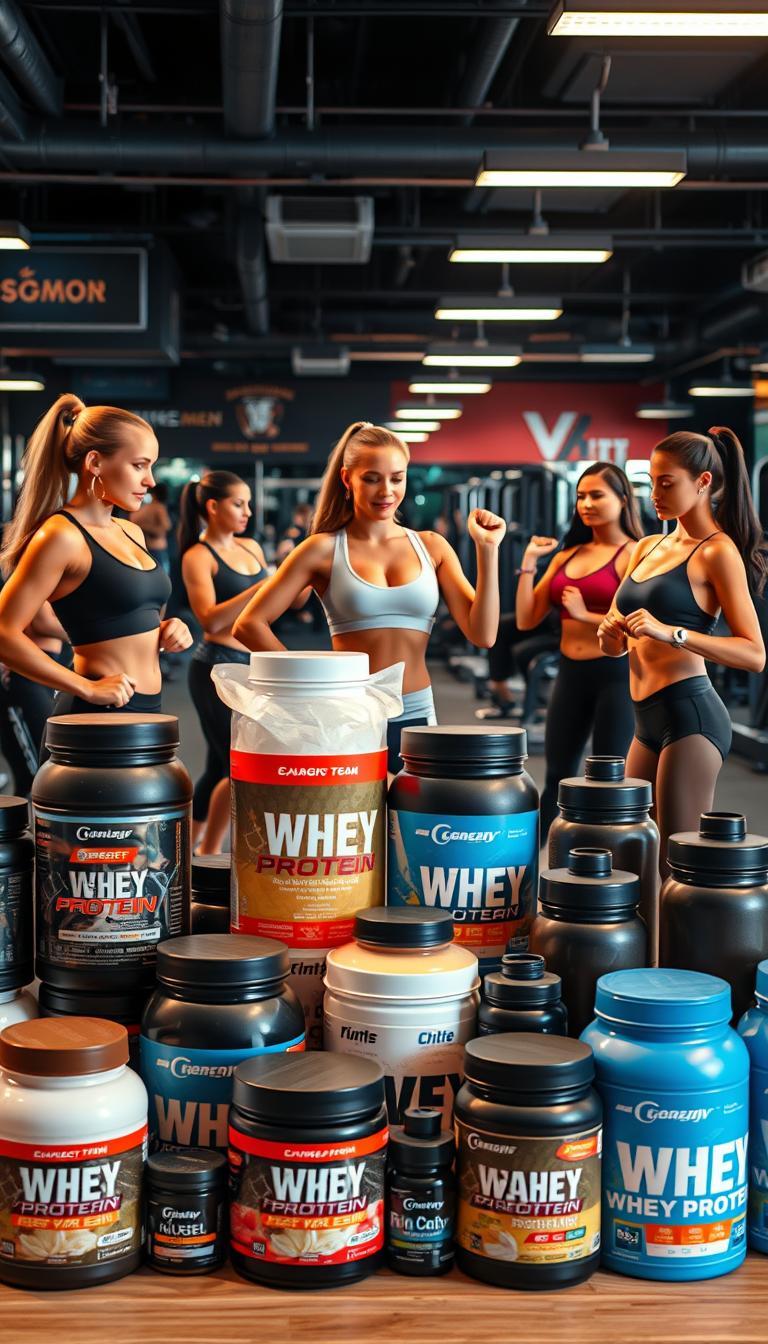
Imagine doing a tough workout and then feeling tired or slow to recover. What if your next meal could do more than just fill you up? For millions, whey protein is more than a supplement—it’s the boost that helps them make progress.
Your body needs the right fuel every day. Protein isn’t just for size—it’s what makes every move, repair, and recovery happen. Whey protein gives your muscles the nine essential amino acids they need, making every scoop a step towards strength.
Key Takeaways
- Whey protein fuels muscle growth with leucine, a key amino acid.
- It curbs hunger, supporting weight loss efforts, and keeps energy steady.
- Studies show it aids blood sugar control and lowers inflammation markers.
- Quick absorption helps muscles recover faster after workouts.
- It’s a versatile, low-lactose option for varied fitness goals.
What Is Whey Protein and Why It Matters
Whey protein comes from milk and is a complete protein. It has essential amino acids that help muscles repair and grow. Let’s explore why it’s special and how it helps your body.
The Science Behind Whey Protein
Whey has all nine essential amino acids. It has lots of branched-chain amino acids (BCAAs) like leucine. These BCAAs help muscles recover fast after working out.
Studies show leucine boosts protein making. This makes whey great for people who are always active.
How Whey Protein Is Made
Whey comes from cheese making. Here’s how it’s made in simple steps:
- Enzymes split milk into curds (for cheese) and liquid whey.
- Liquid whey is filtered to get proteins.
- Steps are taken to remove fats and lactose, making powders like concentrate, isolate, or hydrolysate.
https://www.youtube.com/watch?v=44WTG33KtpU
Nutritional Profile of Quality Whey Protein
Top whey protein isolate has over 90% protein. It has little fat or carbs. Its protein quality is high because it’s easily digested.
Look for labels with low lactose and no artificial stuff.
“Whey’s rapid absorption and BCAA content make it a favorite for post-workout recovery,” says a 2023 sports nutrition review.
When picking, look for clear info on where it comes from and how it’s made. Brands like Optimum Nutrition or NOW Foods often share this info.
The Proven Benefits of Whey Protein for Active Individuals

Whey protein is more than a supplement. It’s a key to better athletic performance and workout nutrition. Science backs it up, showing real benefits for fitness enthusiasts.
- Speeds muscle recoveryby delivering amino acids to repair muscle damage post-workout.
- Increases muscle protein synthesis, helping build lean mass faster than plant-based proteins.
- Reduces exercise-induced inflammation, which improves long-term stamina and endurance.
- Helps maintain muscle mass during calorie deficits, making it ideal for weight management goals.
- /ul
“Optimal nutrition enhances athletic performance and recovery,” states the American College of Sports Medicine. Their research shows whey protein’s amino acids trigger muscle repair within minutes of consumption.
- Studies also show whey lowers LDLL cholesterol while supporting immune function during intense training. This means your body stays strong during heavy lifting or endurance sessions. For best results, pair it with resistance training and a balanced diet.
Types of Whey Protein: Which One Is Right for You
Choosing the right whey protein is all about knowing the options. Each type has its own mix of purity, cost, and benefits. Let’s look at the choices to find what’s best for you.
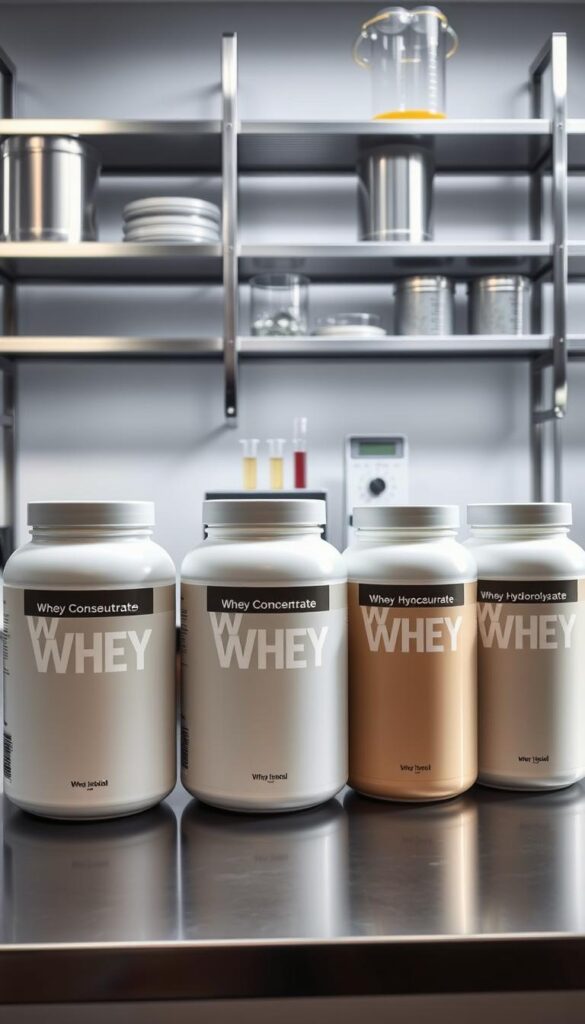
| Type | Protein % | Lactose | Price | Best For |
|---|---|---|---|---|
| Protein Concentrate | 70–80% | Present | Low | General fitness, budget-friendly |
| Protein Isolate | 90–95% | Nearly none | Moderate | Lactose sensitivity, calorie control |
| Hydrolyzed Protein | 99% | Zero | High | Rapid absorption, post-workout recovery |
| Native Whey | 80–90% | Low | Premium | Max nutrient retention, premium diets |
Protein Concentrate
Protein concentrate is a budget-friendly option with 70–80% protein. It has some lactose and fats. It’s good for those who can handle lactose. It also has more nutrients like calcium and B vitamins.
Its fuller taste and lower cost make it popular for casual fitness users.
Protein Isolate
Protein isolate has 90–95% protein, with no lactose or fats. It’s perfect for those avoiding carbs or needing pure protein. Its light taste is great for smoothies or baked goods.
It’s more expensive than concentrate but better for sensitive stomachs.
Hydrolyzed Protein
Hydrolyzed protein is broken down for quick absorption. Studies show it raises insulin levels more than isolate, helping with muscle repair. Its tangy flavor and higher cost make it a niche choice.
It’s good for intense training or digestive issues.
Native Whey
Native whey skips cheese production and uses raw milk, keeping more nutrients. Grass-fed sources add omega-3s and CLA. It’s expensive but great for those who want minimal processing and high nutrient density.
Think about what you need: low lactose, quick absorption, or budget vs. purity? Match your goals to the chart to make a choice.
How Whey Protein Supports Muscle Growth and Recovery
Whey protein starts muscle growth at a tiny cell level. It has amino acids, like leucine, that kickstart muscle repair after you exercise. Each 25g serving has 3g of leucine, which is crucial for fixing muscles.
This amino acid goes straight to your muscles. It helps them grow and recover quickly.
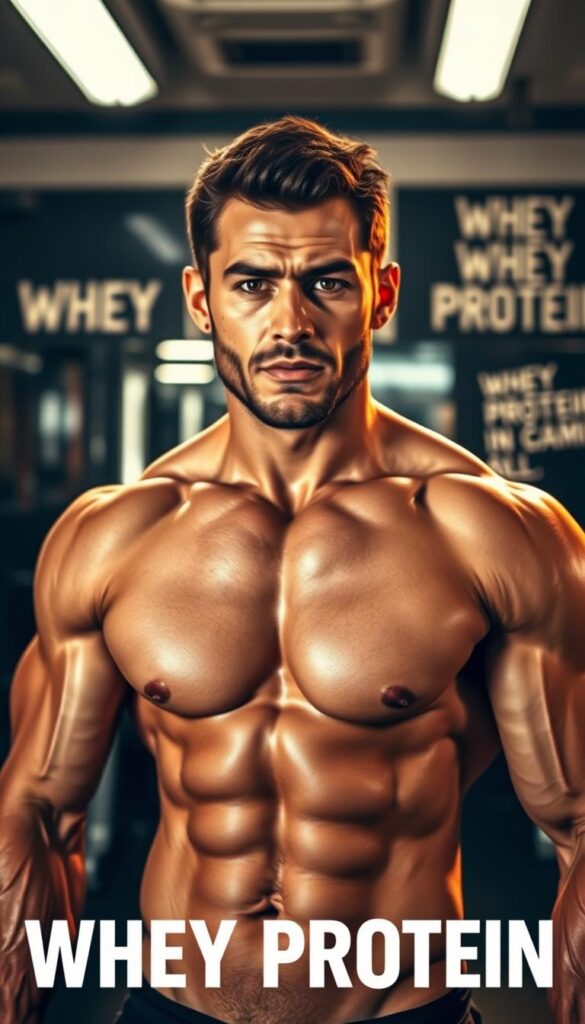
“Even small doses matter: 10g of whey in a carb drink post-workout boosts muscle rebuilding,” says research. Timing and consistency are key to maximizing these effects.
Timing tips for maximum gains:
- Drink 20-40g of whey within 2 hours after working out to meet post-workout nutrition needs.
- Pair it with carbs to help your body absorb it better and refill energy.
- Think about eating 1.6g/kg of protein every day to keep muscles growing.
Working out makes tiny tears in your muscles. Whey protein’s quick digestion sends amino acids to these spots. This speeds up recovery.
Studies show people on bedrest lost 35% less muscle with whey. For hard workouts, 15–30g before or after can help a lot. Even more, up to 1.5g/kg body weight, is good for very tough days.
Leucine in whey turns on a muscle-building switch. It’s like a signal to your cells to build new muscle. This mix of exercise and whey makes your body use protein to get stronger, not just recover. Make sure to follow this science-backed plan to make every workout count.
Beyond Muscles: Other Health Benefits of Whey Protein
Whey protein does more than build lean muscle. It helps with weight management by keeping you full. It’s great for those trying to lose weight without losing strength.
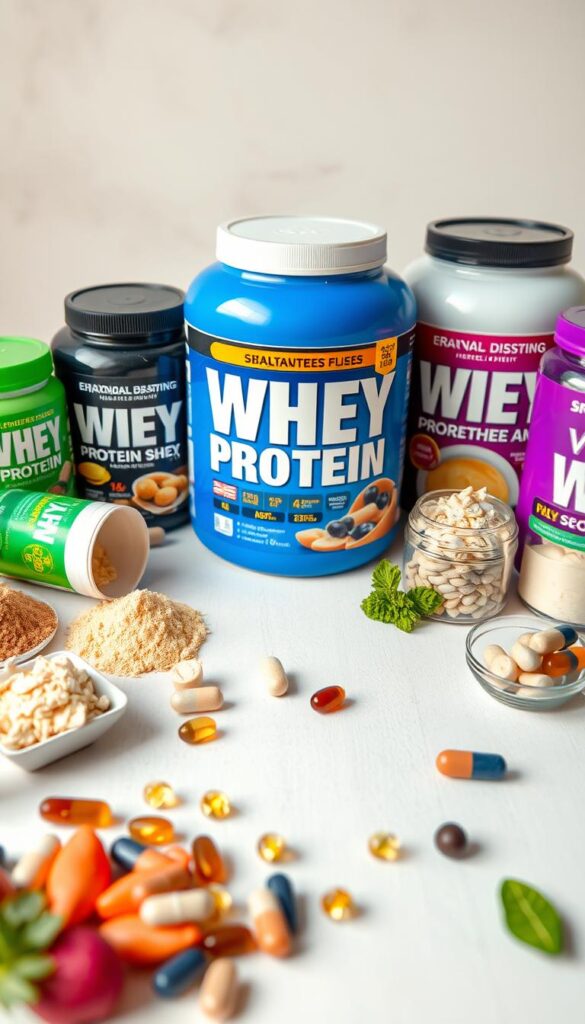
Whey protein boosts your immune system. It has amino acids like glutamine and cysteine. These help make antioxidants, which fight off sickness.
Studies show it can also lower inflammation. This helps with recovery after working out and everyday health.
- Bone health improves thanks to enhanced calcium absorption and collagen production.
- Skin and hair stay vibrant as whey provides amino acids critical for collagen and keratin.
- Metabolism gets a lift: higher thermogenesis and fat oxidation from protein-rich meals.
“Whey protein’s amino acid profile uniquely supports immune resilience and cellular repair,” notes a 2022 study on aging and nutrition.
For older adults, whey fights off muscle loss. It also helps keep blood sugar stable and blood pressure low. It’s full of essential amino acids, making it a key for overall health. It’s perfect for anyone who’s active, whether lifting weights or playing with kids.
How to Incorporate Whey Protein Into Your Daily Routine
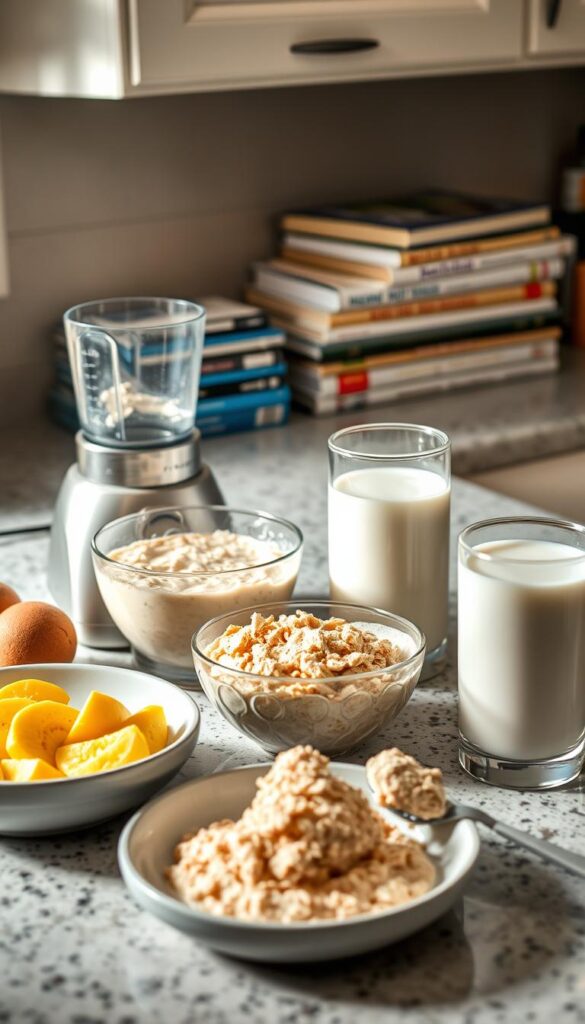
Adding protein powder to your day is easy. You don’t need to turn your kitchen into a lab. These simple ideas mix convenience with nutrition. They help you meet your daily protein intake goals without effort.
| Recipe | Ingredients | Benefits |
|---|---|---|
| Pomegranate Berry Blast | Whey protein powder, frozen berries, almond milk, spinach | 25g protein, antioxidant-rich, energizing |
| Choco-Banana Smoothie | Unflavored protein powder, banana, cocoa powder, almond butter | 22g protein, heart-healthy fats, satiating |
Quick Ways to Boost Meals
- Stir a scoop into oatmeal or yogurt bowls
- Add to pancake batter (replace ¼ flour with powder)
- Blend into soups or chili for a savory protein boost
Timing Tips for Optimal Use
Spread your protein supplement intake evenly. Aim for 20-30g at breakfast, lunch, and after working out. Pair with carbs and fats for better absorption. For best results, aim for 1.2–2g protein per kg of body weight daily.
Try different flavors and forms. Use chocolate protein powder in desserts or unflavored in savory dishes. Small additions can make a big difference. This makes it easy to reach your goals without making things too complicated.
Potential Side Effects and Considerations
Whey protein is great for many, but knowing its limits is key. It must meet protein quality needs. Let’s look at what to watch out for to keep your athletic lifestyle safe.

People with milk allergies might have serious reactions like hives or swelling. If you can’t digest lactose well, choose whey isolate. It has less lactose than whey concentrate. If you have kidney problems, talk to a doctor first. Too much whey can cause stomach issues like bloating or nausea.
“High doses may strain kidneys, especially for those with pre-existing conditions.”
- Busting Myths
Myth 1: “Whey ruins kidneys.” Fact: Only risky for those with existing kidney issues. Myth 2: “Whey makes women bulky.” Fact: Muscle growth depends on training, not protein alone. Myth 3: “Only for bodybuilders.” Fact: Supports all active lifestyles. Myth 4: “Whey harms bones.” Fact: Moderate intake aligns with bone health in most cases.
- Choosing Safe Protein Supplements
Look for NSF Certified for Sport or Informed Choice labels for purity. Check labels for hidden sugars or additives. Always verify claims against third-party testing. For non-dairy options, try pea or rice protein if allergies arise.
Pair smart choices with hydration and balanced nutrition. Your body deserves supplements that deliver what they promise—so read labels carefully and prioritize protein quality.
How to Choose the Best Whey Protein for Your Fitness Goals
Choosing the right whey protein is key to reaching your fitness goals. It matters whether you’re getting stronger, running faster, or lifting heavier. Here’s how to pick the best one:
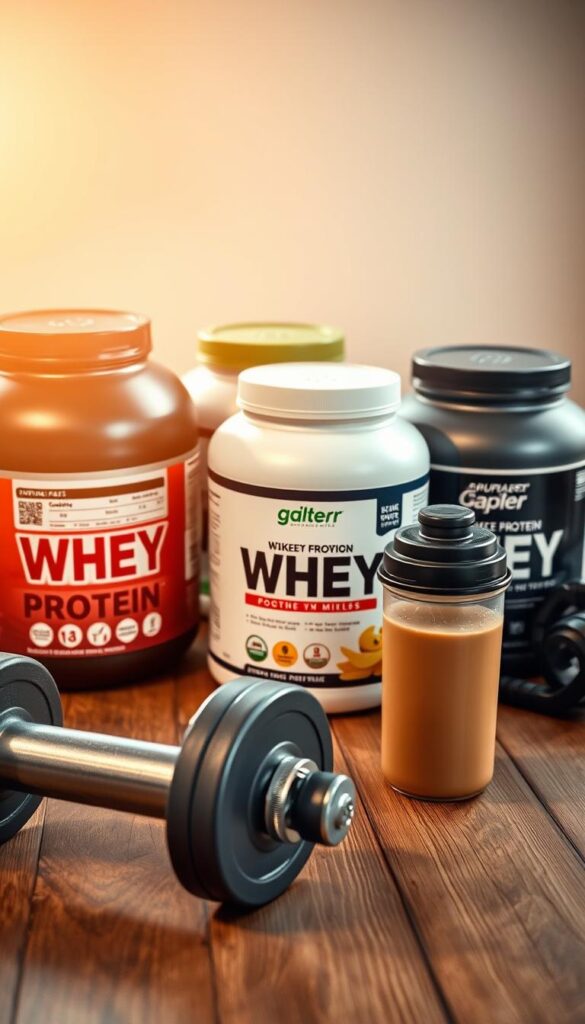
- Calculate your protein needs: Use these guidelines to tailor intake:
- Recreational exerciser: 0.5–0.7g/lb of body weight daily
- Endurance athletes: 0.5–0.8g/lb
- Strength athletes: 0.5–0.8g/lb
- Calorie-restricted athletes: 0.8–0.9g/lb
- Pick the right type:Isolate or hydrolysate for fast absorption post-workout
- Concentrate for cost-effective muscle repair
- Casein at night for slow amino acid release
- Check the label: Look for powders with few additives, no artificial sweeteners, and all amino acids.
- Flavor and mixability: Choose brands that mix well and taste good. This helps you stick to your routine.
For better , mix whey with carbs after working out. If you’re trying to lose weight, pick unflavored, low-sugar options. Always read reviews and think about your budget. Quality doesn’t have to be expensive. With these tips, your whey protein will help you power through every workout and recovery.
Conclusion: Making Whey Protein Work for Your Active Lifestyle
Whey protein is more than just a supplement. It’s a key to fueling your active life. It helps muscles recover after exercise, thanks to its quick absorption and amino acids. It’s also handy when you’re too busy for whole foods.
Choosing the right whey protein is important. If you’re lactose sensitive, whey protein isolate is a good choice. Concentrate has more nutrients but might have some lactose. Always eat balanced meals and enough calories. This way, your body uses protein for muscle growth, not energy.
Many people know protein is good for health, but still don’t get enough. Whey protein makes it easier. Over 70% of people see its benefits. Look for brands that test their products to ensure quality.
Whey protein is just one part of a healthy lifestyle. Combine it with regular exercise, rest, and healthy foods. Adding a shake after workouts or mixing it into recipes can help a lot. With the right approach, whey protein can support your goals, one scoop at a time.
FAQ
What is whey protein?
Whey protein comes from milk during cheese-making. It has all the amino acids your body needs. It’s fast to absorb, great for muscle repair and growth.
How does whey protein benefit muscle recovery?
Whey protein quickly gives amino acids to muscles after exercise. This helps them heal faster. It has special amino acids that help muscles grow.
What are the different types of whey protein available?
There are several types of whey protein. They include Concentrate, Isolate, Hydrolysate, and Native Whey. Each has different protein levels and is processed differently. They meet different dietary needs and goals.
How can I incorporate whey protein into my daily diet?
You can make tasty shakes with whey protein. Add it to baked goods or savory dishes. Think about when you eat it to help muscles recover and balance your diet.
Are there any side effects of taking whey protein?
Most people can safely take whey protein. But, those with dairy allergies or health issues should be careful. Always talk to a doctor before starting.
How should I choose the right whey protein for my fitness goals?
Choose whey protein based on your fitness goals. Look at the type, when to take it, and your diet. This will help you find the best whey protein for you.
Can whey protein help with weight management?
Yes, whey protein can help with weight management. It makes you feel full, which can lower calorie intake. It also helps keep muscle mass while losing weight.
How does whey protein impact immune function?
Whey protein has ingredients that boost the immune system. This is good for people who train hard, as their immune system may be weak.
What should I look for when buying whey protein supplements?
Look for third-party tested whey protein. Check the ingredients and where they come from. Make sure it fits your diet goals. Choose brands that are open about their methods.
Is it true that whey protein can make women bulky?
No, this is a myth. Whey protein helps with muscle recovery and growth. It doesn’t make women bulky unless they train and eat to gain muscle.

